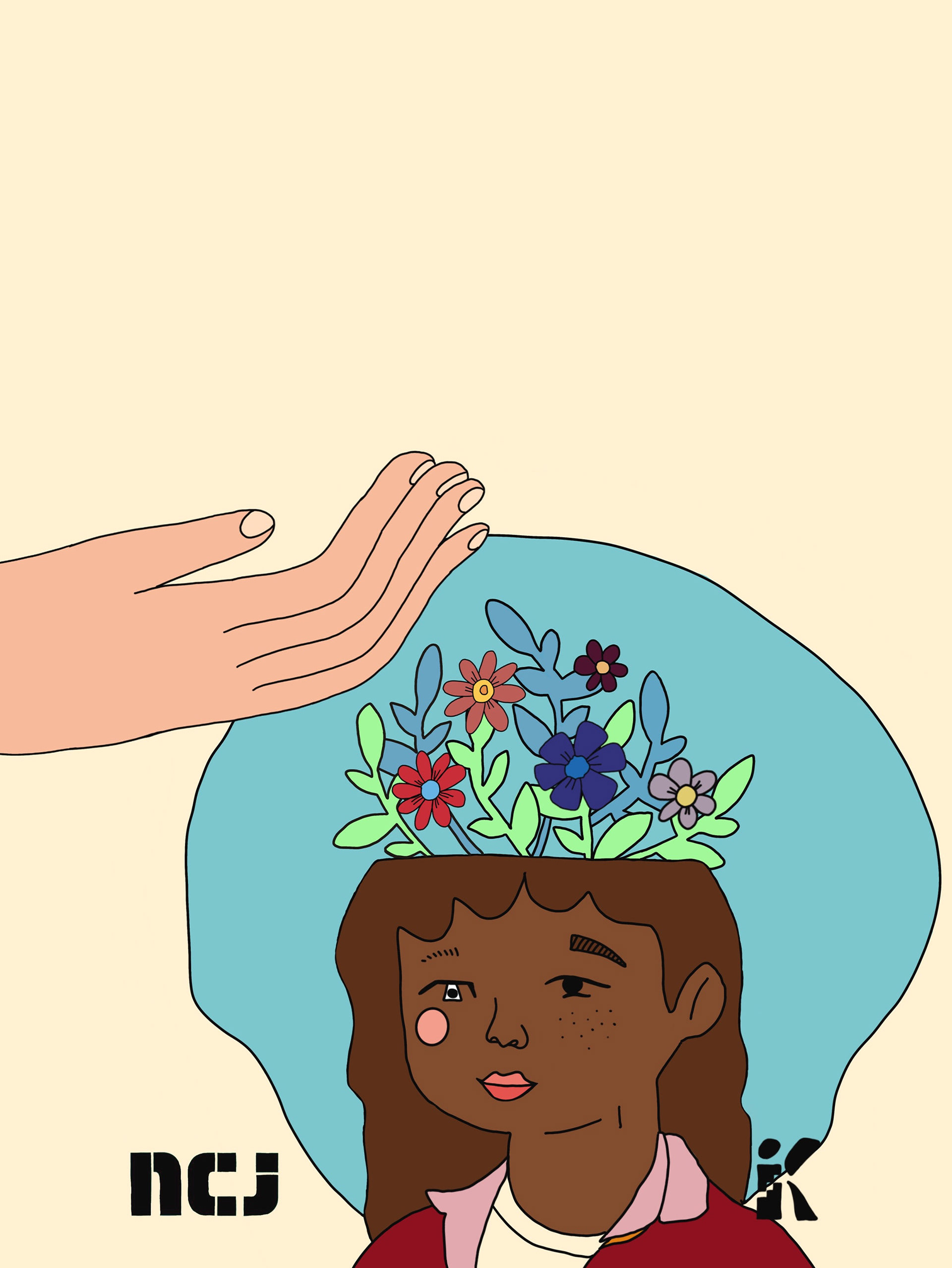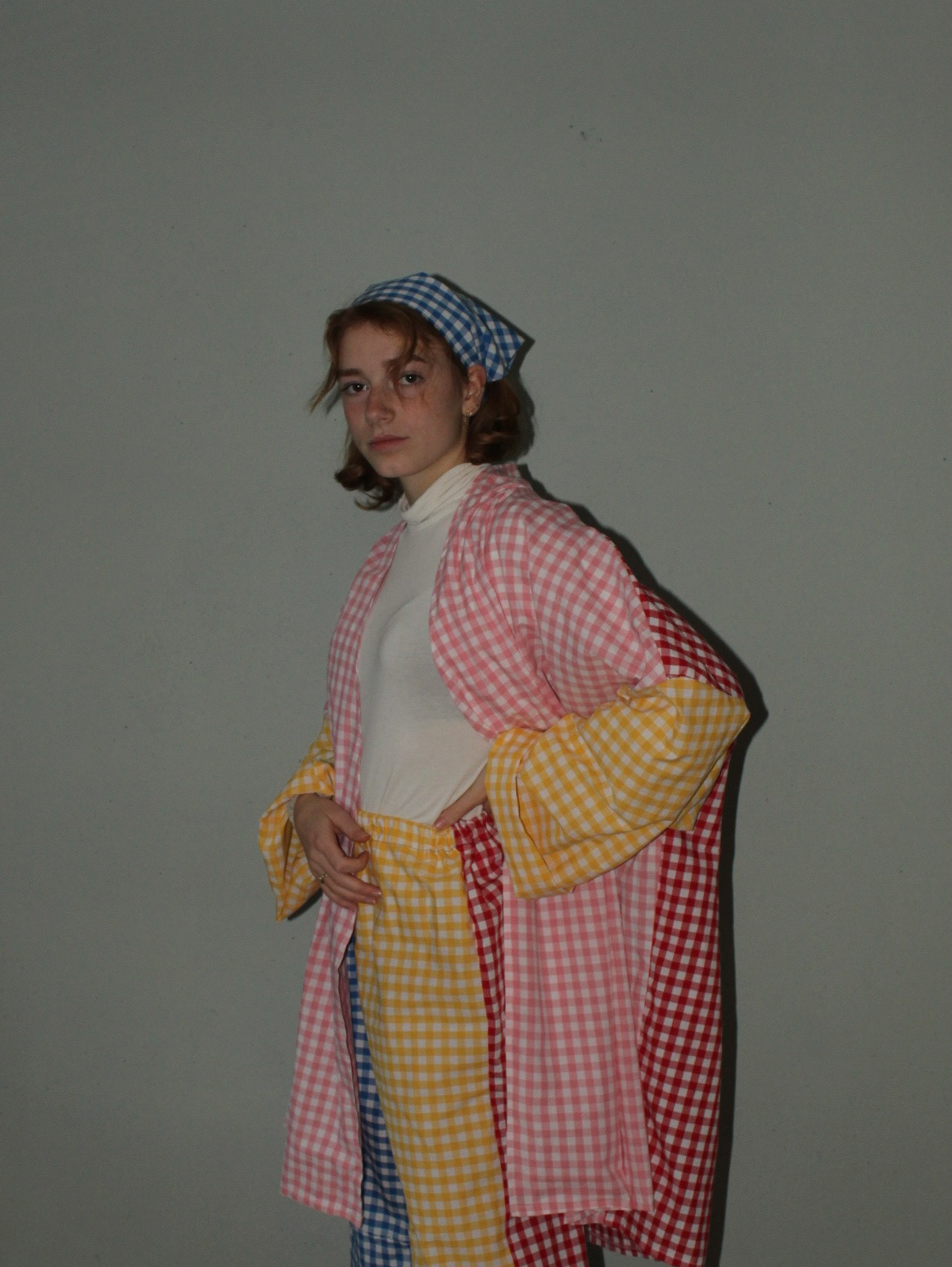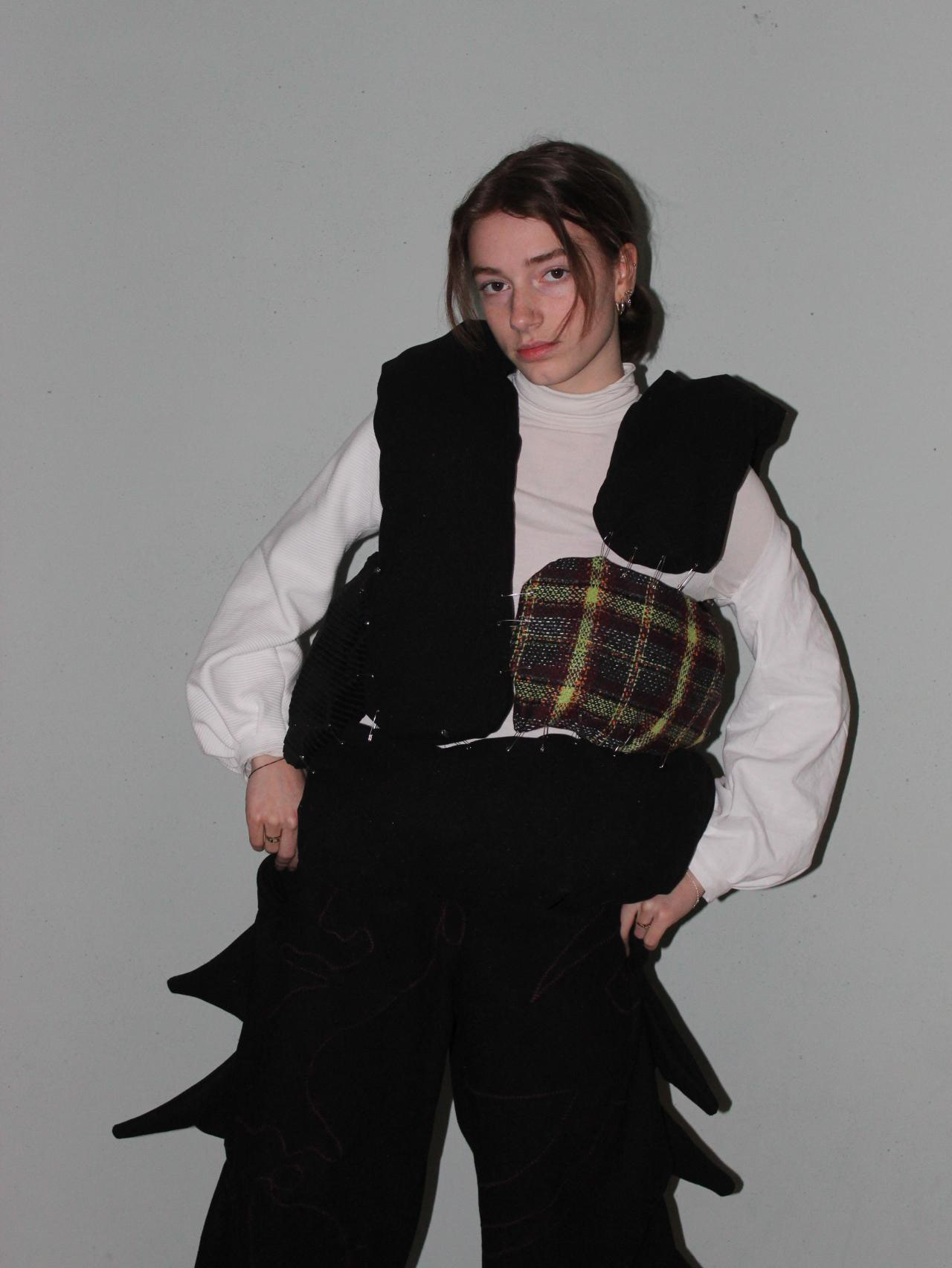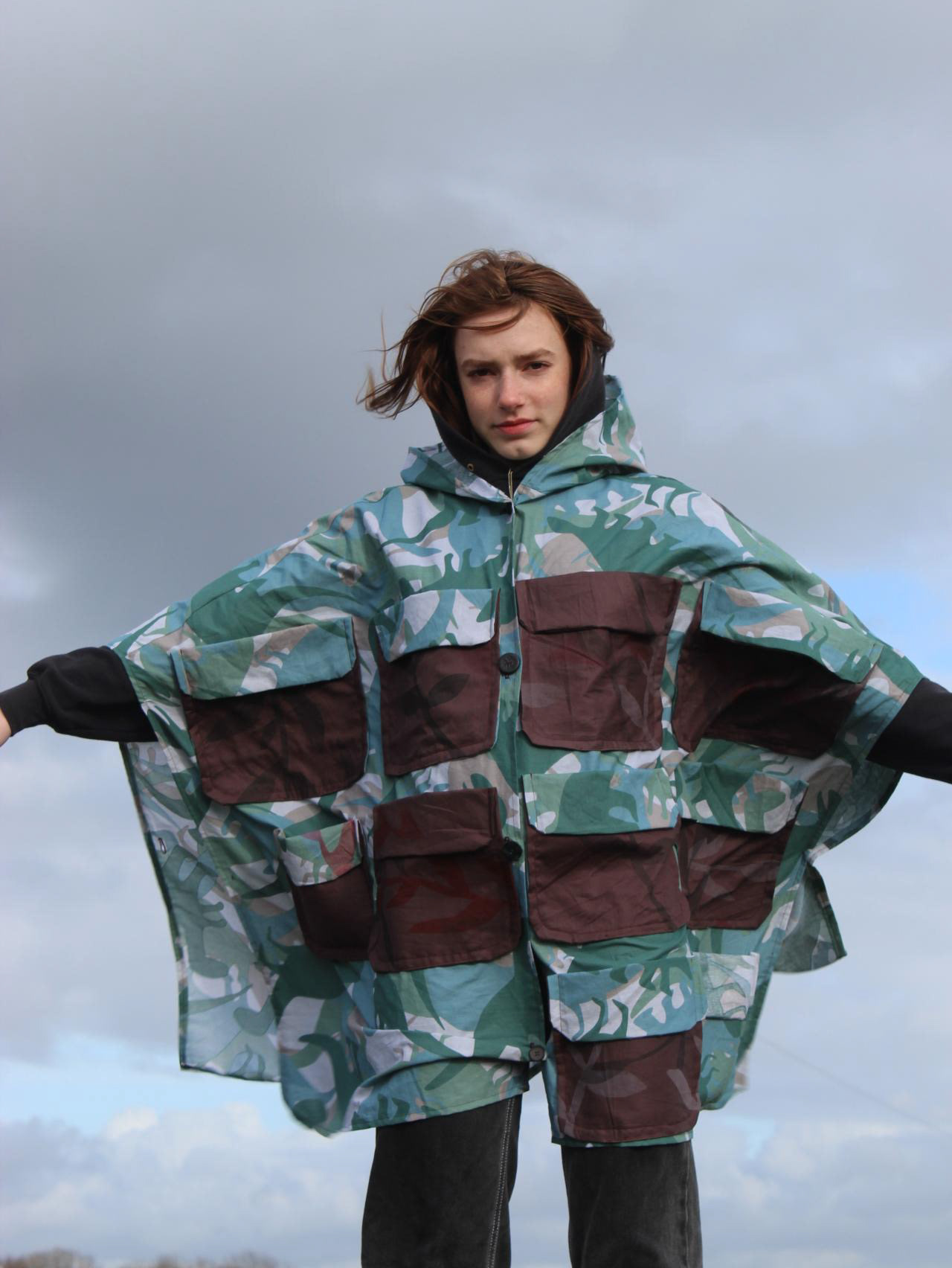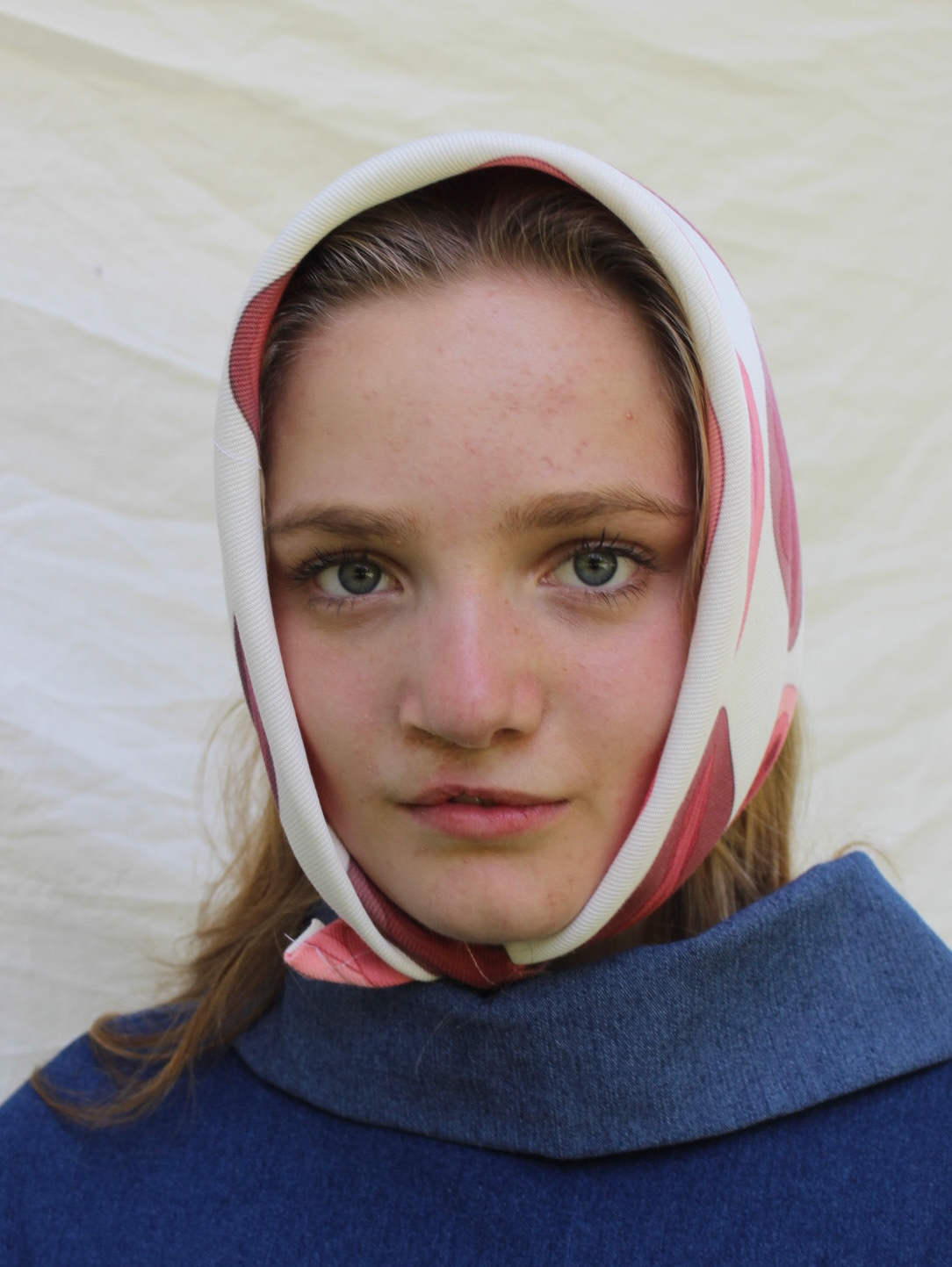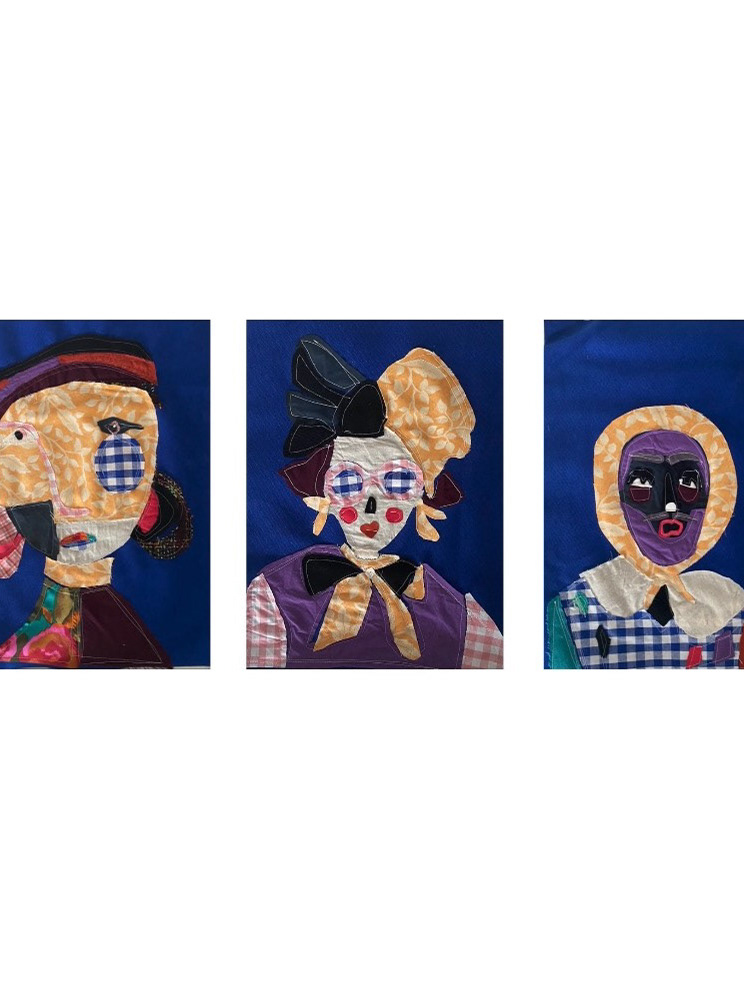This group project was about the future of fashion. What would that look like, in what way? We started with the care and breeding of an ancient animal: the Triops. The genus Triops is about 351 million years old. They have been able to survive for so long because the eggs are resistant to all weather conditions. After the ice age, the ice began to melt and water returned to the eggs, causing them to hatch. The eggs hatch within 24 to 48 hours when in contact with water. We had to draw inspiration from these triops.
Unique material
The Triops' shell is made of protein and calcium carbonate, mainly chitin. Due to this composition, the armor is not stretchable and the crustacean must therefore molt in order to grow. Their body consists of many segments, these segments have a hard exterior. Their legs get redder when oxygen is low in water.
The Triops' shell is made of protein and calcium carbonate, mainly chitin. Due to this composition, the armor is not stretchable and the crustacean must therefore molt in order to grow. Their body consists of many segments, these segments have a hard exterior. Their legs get redder when oxygen is low in water.
Contribution to the environment
The species is considered a human ally against West Nile virus as the individuals consume Culex mosquito larvae. In addition, most of the larger crustaceans are often scavengers; they scour the bottom of the sea in search of dead or decaying organic matter. Softer animals such as worms are also often eaten. In this way the triops clean up their surroundings, as it were. Also, crustaceans are an indispensable source of food for many other animals. A number of species of fish, turtles, birds, salamanders and marine mammals such as whales would not exist without the Crustacea. An example is the fire salamander, which as a larva depends on crustaceans. The curlew, knot and flamingo are examples of birds that get rid of large numbers of crustaceans. They belong to the consumer first order.
The species is considered a human ally against West Nile virus as the individuals consume Culex mosquito larvae. In addition, most of the larger crustaceans are often scavengers; they scour the bottom of the sea in search of dead or decaying organic matter. Softer animals such as worms are also often eaten. In this way the triops clean up their surroundings, as it were. Also, crustaceans are an indispensable source of food for many other animals. A number of species of fish, turtles, birds, salamanders and marine mammals such as whales would not exist without the Crustacea. An example is the fire salamander, which as a larva depends on crustaceans. The curlew, knot and flamingo are examples of birds that get rid of large numbers of crustaceans. They belong to the consumer first order.
Unique qualities
The triops are used as biological pest control in Japan. In addition, Triops lay long-life eggs. They accomplish this by laying something called cysts, or resting eggs, which are eggs with a special structure that protects the interior from extreme temperatures, drought, and even radiation. These cysts allow triops to venture into new territory by taking a ride on some pretty distant means of transportation, including in migratory birds and in the feet and poop of animals that pick them up from puddles and pools. In addition to sexual reproduction, some eggs can develop without fertilization. Other triops are hermaphrodites. This means that a whole population can develop from just one egg. No wonder they survived so long.
The triops are used as biological pest control in Japan. In addition, Triops lay long-life eggs. They accomplish this by laying something called cysts, or resting eggs, which are eggs with a special structure that protects the interior from extreme temperatures, drought, and even radiation. These cysts allow triops to venture into new territory by taking a ride on some pretty distant means of transportation, including in migratory birds and in the feet and poop of animals that pick them up from puddles and pools. In addition to sexual reproduction, some eggs can develop without fertilization. Other triops are hermaphrodites. This means that a whole population can develop from just one egg. No wonder they survived so long.

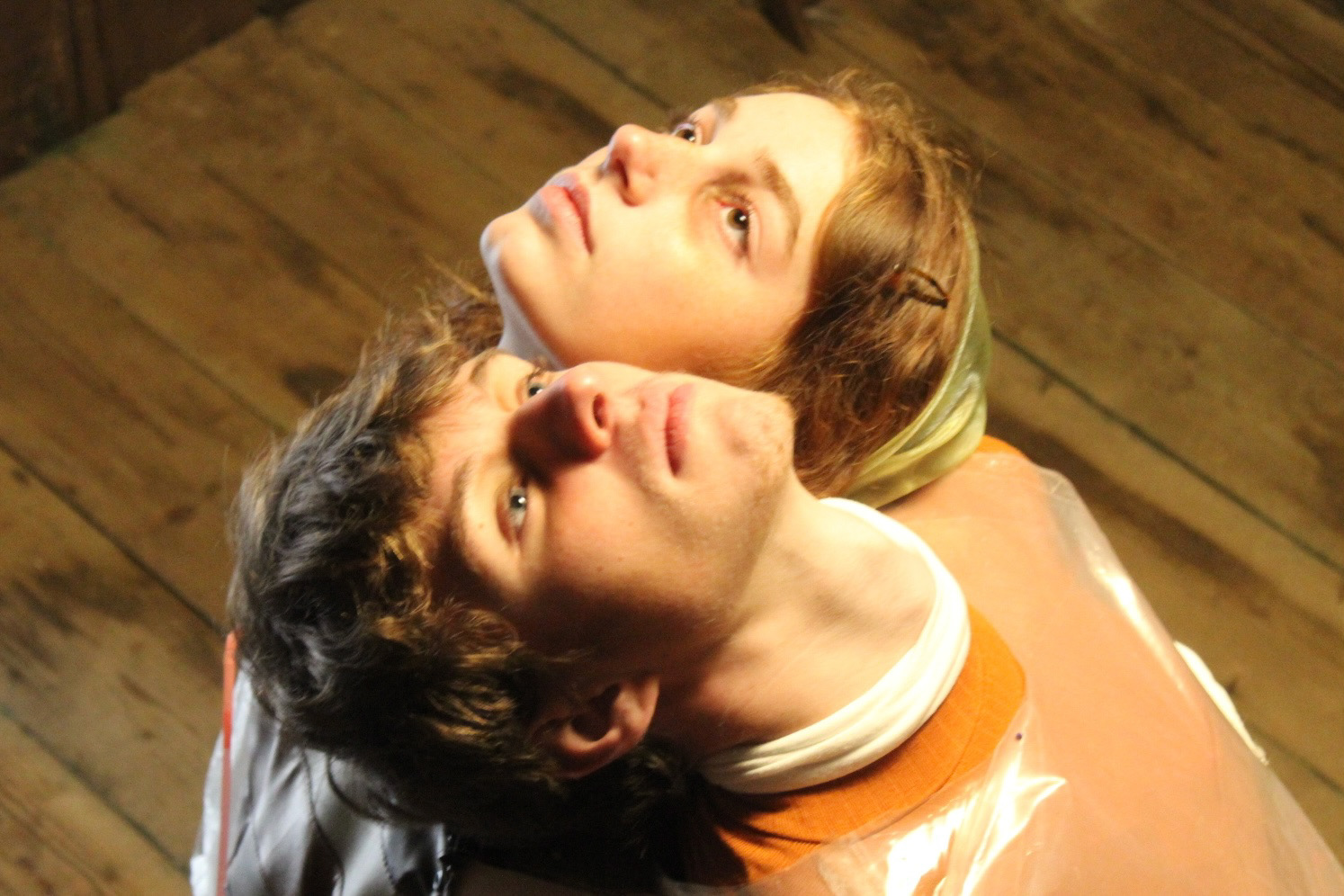
We see the future very negatively, few plants, little oxygen and or a very warm or cold temperature. In order to be able to adapt to different situations, we have devised several parts that together make an outfit. For example, different sleeves with different functions.
First, we decided to use the indestructible of the eggs to create an indestructible shield that could protect you from the outside world. The sleeves have a breather pocket with a tube to allow you to breathe when you need it. Flowers grow on the underside of the coat. You grow something while wearing it. You give something back to nature. The jacket would have a water reservoir to water the flowers. The shoes would bring the water up into the jacket through the ground. This was very difficult to achieve.
In the second outfit is a body in which flowers grow. The sleeves can be detached from the body. You have a set of heat sleeves that make you warm in a lot of cold, you have solar panel sleeves to generate solar energy to store or give to the flowers. The skirt is extendable, so you can adjust your outfit to the temperature.
Below the sketches we made, it is in Dutch.
To capture these dystopian outfits, we made a video.
I was in charge of the still photography, the outfits we made togheter.
Below the sketches I made individually to come up with ideas.
